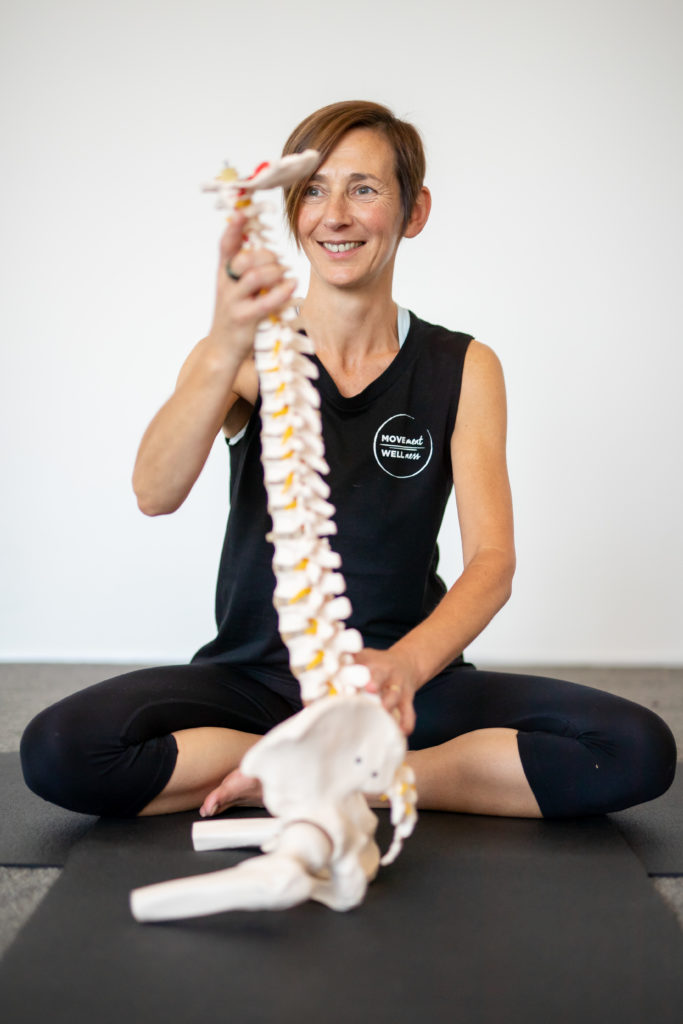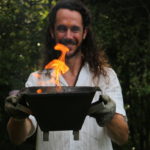by Dr Jane Hardcastle, Movewell: therapeutic yoga, massage, and movement

Hearing “take a deep breath in…and out” is ubiquitous in many yoga classes, as yoga teachers encourage students to better access their breath, become aware of ‘chest breathing’ and use their breath as a barometer of where, and how they are. Classes are often accompanied by publicly audible ‘ujjayi’ breath. We witness bellies expanding as students believe they are ‘doing’ great breathing.
But should we ever ‘do’ breathing? Surely we should ‘be’ breathed, allowing the body’s exquisitely calibrated autonomic nervous system to ‘do’ what it is designed to do?
Herein lies a fundamental problem, or if you prefer, a fundamental question to ask yourself as a yoga teacher, student or scholar: are cues such as “deep”, “big”, “expansive”, or “full belly” inhalations contributing to the contemporary societal problem of over-breathing?
Let’s have a look at how the rate of adult breath per minute rates have changed in society in our recent history:
In 1939 the average adult breath rate per minute was 9
In 1950 it was 14
By the 1990s it had almost doubled to 24
In 2020 there is little evidence of true rate per minute
We breathe more rapidly in response to physical, psychological, emotional, and even environmental stressors, or demands. Such stressors have undoubtedly changed as society ‘develops’. Yet our true physiology remains unchanged unless we inadvertently manipulate it.
We may believe that, if the normal range for respiratory rate is 12-20 per minute (Health Quality & Safety Commission, New Zealand 2017), yoga students who ‘do’ good breathing must be at, or below the lower end of normal. Yet the ‘high normal’ had to be expanded from 16 to 20/min in the last five years as early warning score systems in hospitals internationally demonstrated that the general population were breathing more.
It’s clear that we, as a society, over-breathe, and associate over-breathing with breathing too quickly.
This is true, but we can also over-breathe by breathing too deeply, expelling excessive amounts of carbon dioxide (CO2) and consequently resetting homeostatic thresholds to believe that a lower than ‘normal’ CO2 is ‘normal’ for us. This then triggers a need to breathe more (quickly OR deeply) whenever the CO2 concentration in the blood rises above our ‘new normal’. This homeostatic reset creates a perpetual cycle of over-breathing that feels perfectly normal.
Some background physiology helps to illustrate this; CO2 removal occurs almost exclusively via breathing, with each exhale. One of the major determinants of how much CO2 is removed is the number of breaths per minute. The other factor that determines CO2 removal is the size of the breath (known as the tidal volume). Together these factors create the minute volume: the volume of gas that enters and leaves the lungs in one minute. The larger the minute volume, the more CO2 is removed. Frequent ‘practice’ of large, excessively deep breaths creates the potential for new normal CO2 levels and greater stimulus to maintain a larger minute volume. This is over-breathing.
Despite the best of intentions, the cues of yoga teachers and the inclusion of pranayama practices without truly understanding the physiological implications of each practice could be detrimental to students and ourselves.
Full, diaphragmatic breath includes ‘appropriate’ recruitment of the respiratory diaphragm and external intercostal muscles. The respiratory diaphragm descends and flattens down into the abdominal cavity (anteriorly and posteriorly) with the active inhale phase of the breath, as the intercostal muscles contract to lift the ribs out laterally (side body breath). This expands the container for the breath, lowers the pressure inside the container and air flows in, until a pressure equilibrium is reached. The exhalation is largely passive as the diaphragm and external intercostal muscles simply recoil, increasing the pressure in the container for the breath; creating a flow of air out until the same equilibrium is reached. There is some assistance from active internal intercostal muscle contraction here, that we can increase with voluntary control and a more forceful exhale. This would result in a larger expiratory tidal volume….and more CO2 removal!
So how do we know what is appropriate breath?
Simply speaking, its about supply and demand. If our demand is raised, we require more oxygen, produce more CO2 as a waste product, and therefore need to create an increase in minute volume until supply meets demand.
The stunning news is…your body knows exactly what to do if you let it breathe itself.
If we listen and allow the autonomic nervous system to do its job; we breathe at a depth and speed that is just right, in that moment. The breath adapts, exactly as it needs to. We move with ease, as our breath is easeful. We create a perfect harmony between nature and nurture that allows us to be, just as we are.
Pranayama practices are not wrong, far from it. We can indeed utilise specific pranayama techniques to reset the homeostatic threshold for CO2 to a more appropriate normal. We can learn to be more comfortable with less breath and, with practice, connect into the parasympathetic nervous system this way. We can explore practices such as Buteyko’s reduced breathing and controlled pause to evaluate where we are, and how we respond to stressors. The scope of practice with breath and pranayama is so vast, it deserves our understanding. My intention with this article is to stimulate critical thinking around pranayama and breathing cues, encourage you to explore the rationale underpinning your practice, and ultimately contemplate your practice and teaching intentions.
I would love to hear your thoughts, questions and explorations.

Dr Jane Hardcastle is a yoga therapist, therapeutic yoga teacher and co-owner/director of MoveWell – a therapeutic yoga, massage and movement centre in Christchurch. Jane is a Dr of adult education (EdD), worked as a principal lecturer in post-graduate nursing for 10+ years, and has been a registered nurse for almost 30 yrs. She now practices full time in yoga therapy and teaches small group therapeutic yoga classes at MoveWell.


Nice and very unique post… Thank you very much…